Quantifying Life: A Symbiosis of Computation, Mathematics, and Biology
Dmitry A. Kondrashov
The University of Chicago Press
Chicago and London
The University of Chicago Press, Chicago 60637
The University of Chicago Press, Ltd., London
2016 by Dmitry A. Kondrashov
All rights reserved. Published 2016.
Printed in the United States of America
25 24 23 22 21 20 19 18 17 16 1 2 3 4 5
ISBN-13: 978-0-226-37162-7 (cloth)
ISBN-13: 978-0-226-37176-4 (paper)
ISBN-13: 978-0-226-37193-1 (e-book)
DOI: 10.7208/chicago/9780226371931.001.0001
Library of Congress Control Number: 2016939464
 This paper meets the requirements of ANSI/NISO Z39.48-1992 (Permanence of Paper).
This paper meets the requirements of ANSI/NISO Z39.48-1992 (Permanence of Paper).
To my teachers, for challenging me when I was complacent and for helping me rise to the challenge
Science begins with counting. To understand a phenomenon, a scientist must first describe it; to describe it objectively, he must first measure it.
Siddhartha Mukherjee, The Emperor of All Maladies
Preface
I wrote this textbook for a course that I developed for first-year college students intending to study biology at the University of Chicago as a part of curriculum reform initiated by the Master of Biological Sciences Collegiate Division Jos Quintns. Biology is changing at a break-neck pace and is becoming ever more reliant on complex computational tools and quantitative models, while the curriculum for biology majors has been largely stuck in the pregenomics era. This is especially true of the quantitative component, which is traditionally limited to (at most) a year of calculus and a statistics course. This is not enough to even begin to follow the ideas and methods of current research, which heavily relies on stochastic models, differential equations, and computational algorithms.
In the last few years, these challenges have been recognized by the biology community and have resulted in a boom in bio-calculus textbooks and materials. While combining the concepts of calculus (derivatives, integrals, series) with biological applications sounds good, in my view it still doesnt supply the critical missing components mentioned above. In fact, I started out teaching this course using a bio-calculus approach but realized that this severely restricts the range of biological applications that could be discussed. I also found that the traditional mathematics pedagogy of working out problems on paper is not sufficient for addressing many questions of interest. Instead, I realized that computation is the most useful, as well as the most challenging, skill needed for a quantitative understanding of modern biology.
These hard-won empirical observations led me to develop the course and the textbook as a chimeric beast made up of elements of statistics, probability, Markov models, and differential equations. The thread that holds these pieces together is programming, which enables students to see and experience fairly complex mathematical ideas. Therefore, each chapter in the textbook contains a modeling section, a mathematics section, and computational section, which all reinforce each other and provide different viewpoints on the same concept. Based on my experience, students with no prior programming experience find the first steps to be tough going, but by the end of course they often achieve a level of comfort with basic coding that they find very valuable in their research and education.
As mentioned above, the person who is most responsible for the existence of this book is Jos Quintns. He had a vision of a biology curriculum that served the needs of students and firmly believed in the necessity of greater quantitative literacy in this field. He allowed me to develop my courses the way I saw fit, while providing support and guidance when needed, and encouraged me to start writing up my notes as a book. I am greatly indebted to him, so I thank him and wish him a happy and active retirement.
I also want to thank my colleagues in Biological Sciences Collegiate Division for providing an excellent work environment, and in particular Esmael Haddadian and Elizabeth Kovar, who helped me teach this course in earlier iterations. Donald Frederick, a former student who later worked as a TA and then served as computer lab director for the course, helped me greatly with finding the right approach for the computational assignments. I also thank all of the TAs over the years, whose contributions and feedback have helped shape the course: Colin Pesyna, Chris Bun, Lamont Samuels, Pooya Hatami, Denis Pankratov, Sandra Fernandez, Negar Mirsattari, Mladen Rasic, Kristen Voorhies, Tim Armstrong, Erik Bodzsar, Alexander Ostapenko, Tasneem Amina, Jason McCreery, Andrea Garofalo, Davis Bennet, Aleks Penev, Kirstie Wade, Sven Auhagen, Sneha Popley, Sobha Naderi, Matthew Battifarano, Brad Cohn, Adam Filipowicz, Hunter Chase, Erika Dunn-Weiss, Charles Frye, and Lynda Lin-Shiu.
I thank the colleagues and friends who read the manuscript at various stages of its evolution and helped improve it with their suggestions: Will Trimble, Sarah Hews, Hannah Callender, Kayla Lewis, Jeff Edmunds, Daniel Coombs, Natalia Toporikova, John Jungck, Carl Bergstrom, and Timofey Kondrashov. I also thank my wife, Arielle Hirschfeld, for bringing in her medical perspective, which is reflected in many applications in the text. I thank the editors and staff at the University of Chicago Press, particularly Christie Henry, Jenni Fry, Nick Lilly, and Logan Smith, for patiently shepherding the book from a manuscript and for handling the promotion and production details. Im also greatly indebted to Mikala Guyton and Cyd Westmoreland at Westchester Publishing Services for supervising the editorial process and for copyediting the manuscript with great care, respectively.
This book was written and typeset using a number of open-source tools, so I would like to thank the developers and the communities that maintain and improve these phenomenal resources and keep them available to all. I use the R language https://www.r-project.org/ for programming and generating many of the figures in the text and R Studio https://www.rstudio.com/ as the user-friendly interface for working with R. The manuscript was typeset using LATEX https://www.latex-project.org/ with the MacTeX distribution https://tug.org/mactex/ and the TeXShop front end http://pages.uoregon.edu/koch/texshop/obtaining.html. The combination of R and LATEX was done using the knitr package http://yihui.name/knitr/ and many of the figures were generated using the TikZ graphics package http://www.texample.net/tikz/. I also thank the biomathematics community and specifically acknowledge the new QUBES hub https://qubeshub.org/ for providing a repository for teaching resources and for connecting colleagues teaching at the interface of mathematics, computation, and biology.
This book would not exist without the teachers whom Ive been privileged to learn from, starting from middle school (School 2 in Pushchino, Russia), Memorial High School in Madison, Wisconsin, Simons Rock College of Bard, and the Graduate Program in Applied Mathematics at the University of Arizona. The teachers and mentors to whom I am most indebted are Yelena Gavrilovna Kuznetsova, Victor Levine, William Dunbar, Eileen Handelman, Joseph Watkins, Hermann Flaschka, Joceline Lega, and William Montfort. They all helped me learn and grow, and continue to inspire me today.
My family has encouraged my curiosity and love of science since I first became conscious. For this I thank my parents, Alexey and Natalia, as well as my grandparents, Maria Nikolayevna Kondrashova and Simon Elievich Shnol, who are both scientists themselves, and Nina Ivanovna Vasilieva and Yuri Semyonovich Sedov, who also encouraged and supported me. I am lucky to have the best brothers anyone could have: Fedya, Vasya, Misha, and Tim. I am profoundly grateful to my wife, Arielle Hirschfeld, who had to put up with years of my work on this manuscript and has not only supported and encouraged me in this endeavor but also made substantial contributions, as I mentioned above. Finally, my son Ellis has also helped with his interest in my work and his example of working on his own writing projects, often much more efficiently than his father.
Next page
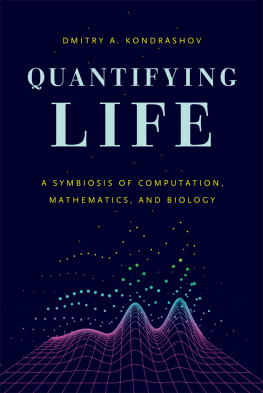
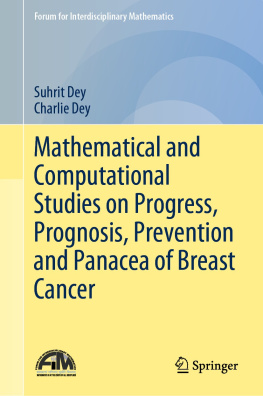
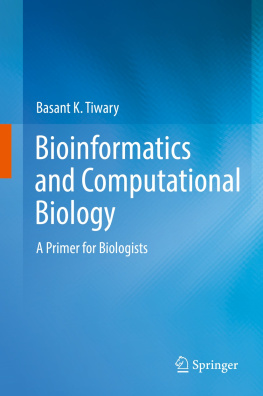
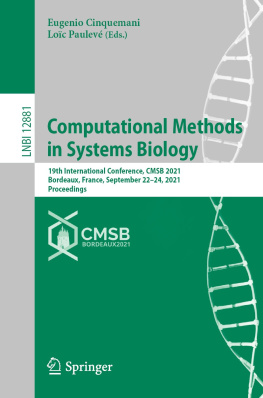
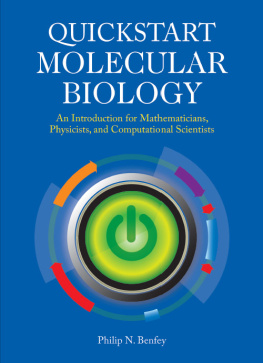

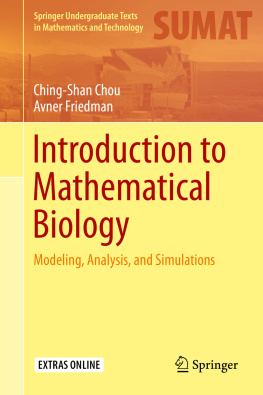
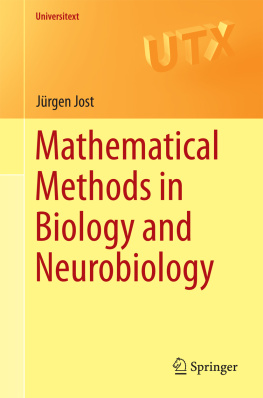
 This paper meets the requirements of ANSI/NISO Z39.48-1992 (Permanence of Paper).
This paper meets the requirements of ANSI/NISO Z39.48-1992 (Permanence of Paper).